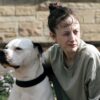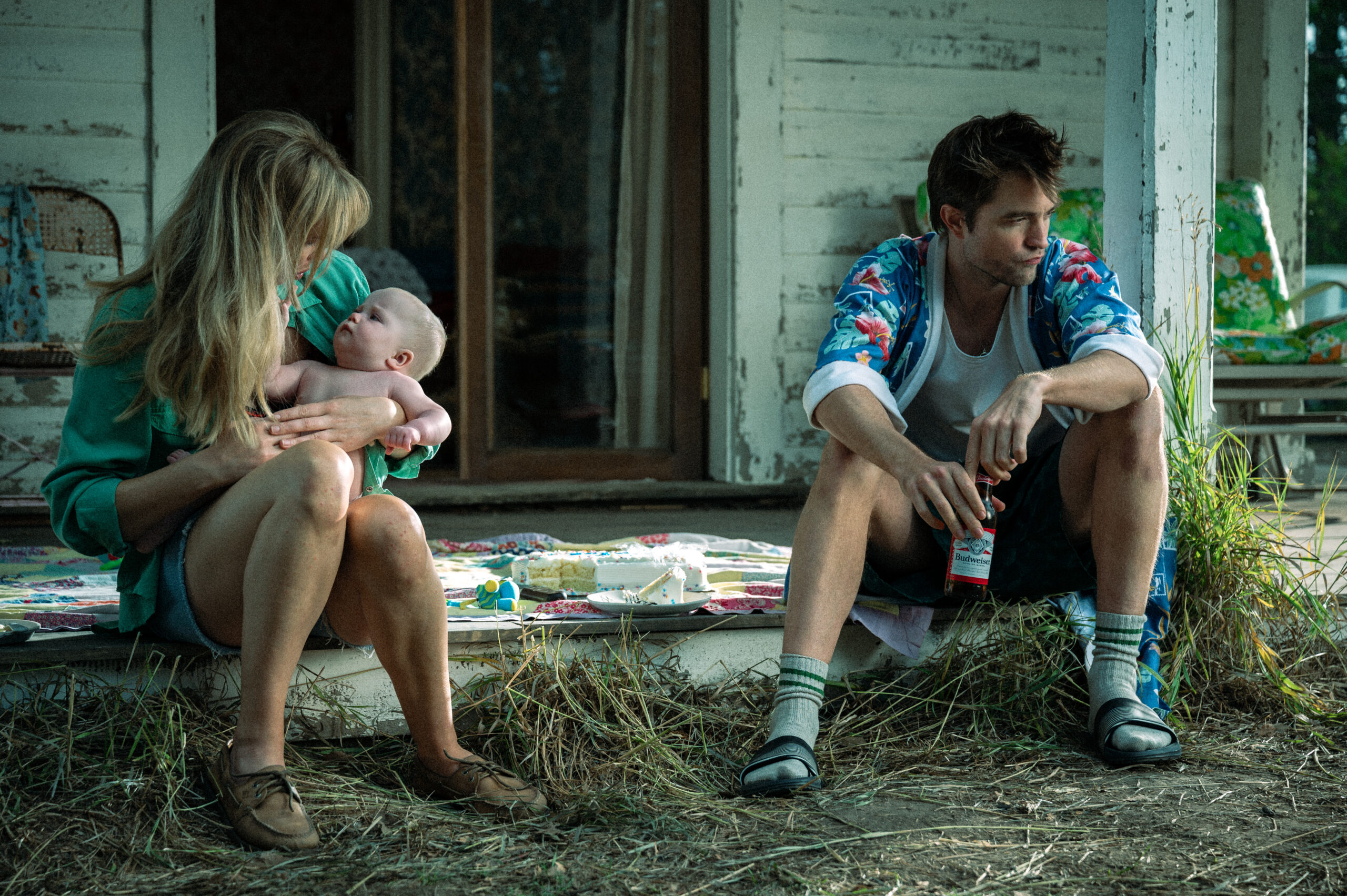
Rewrite
Augmenting her peerless canon with a volatile and sensual fifth full-length feature, Scottish auteur Lynne Ramsay talks directing Hollywood’s finest, the precision behind her career choices, and adapting Ariana Harwicz’s novel.
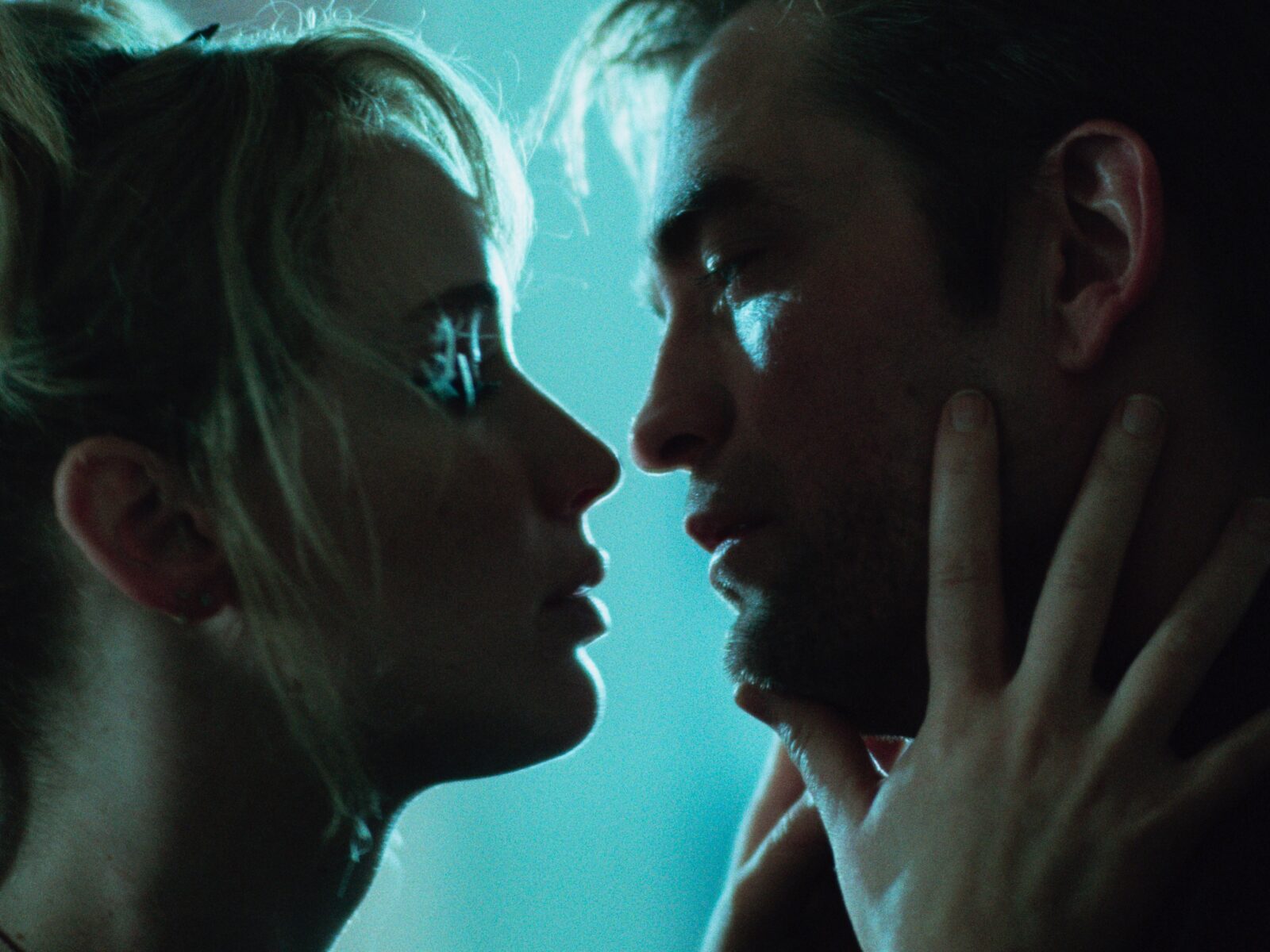
It’s been eight years since Lynne Ramsay released her last film, You Were Never Really Here, a dark and daring depiction of Joaquin Phoenix’s ex-soldier and the seedy underworld he moonlights as a vigilante. “It was a real fucker that Covid kicked in,” the Scottish director explains, her hearty laugh reverberating through the computer screen. She reveals she had another film ready to enter production before the world shut down. Set in the Arctic, based on a short story by Margaret Atwood, the film is still a central ambition of hers to make. But once the dust cleared from lockdown, her fixation lay elsewhere – thanks to one Jennifer Lawrence, her producer and leading lady in Die My Love.
55-year-old Ramsay – gorgeously erratic in conversation, tuning in during the madness of London Film Festival – has, including her new opus that we’re about to discuss, only released five feature length films across a 25-plus year career in filmmaking. That’s 1999’s Ratcatcher, widely renowned as one of the best ever British debut films, followed by 2002’s coming-of-age drama Morvern Callar, then the devilishly entertaining tragedy We Need to Talk About Kevin some nine years later, before the aforementioned You Were Never Really Here, in 2017.
Despite the infrequency of her films, Ramsay is considered among the best of her generation – a multi-award winning auteur with a unique cinematic eye, and an indelible interest in exploring the crevices of the human psyche. All-in-all, she’s a mightily impressive woman.
Now – Die My Love. Even for a creator known for her divisive, idiosyncratic filmmaking, Ramsay’s latest dips into difficult and provocative material. It’s a film adapted from the 2012 novel by Argentine writer Ariana Harwicz, co-written with Hunger writer Enda Walsh and Normal People writer Alice Birch, the story is re-interpreted in rural Montana. It follows a young couple with a newborn baby, as they fall into a nightmarish cycle of isolation and a deterioration of their relationship.
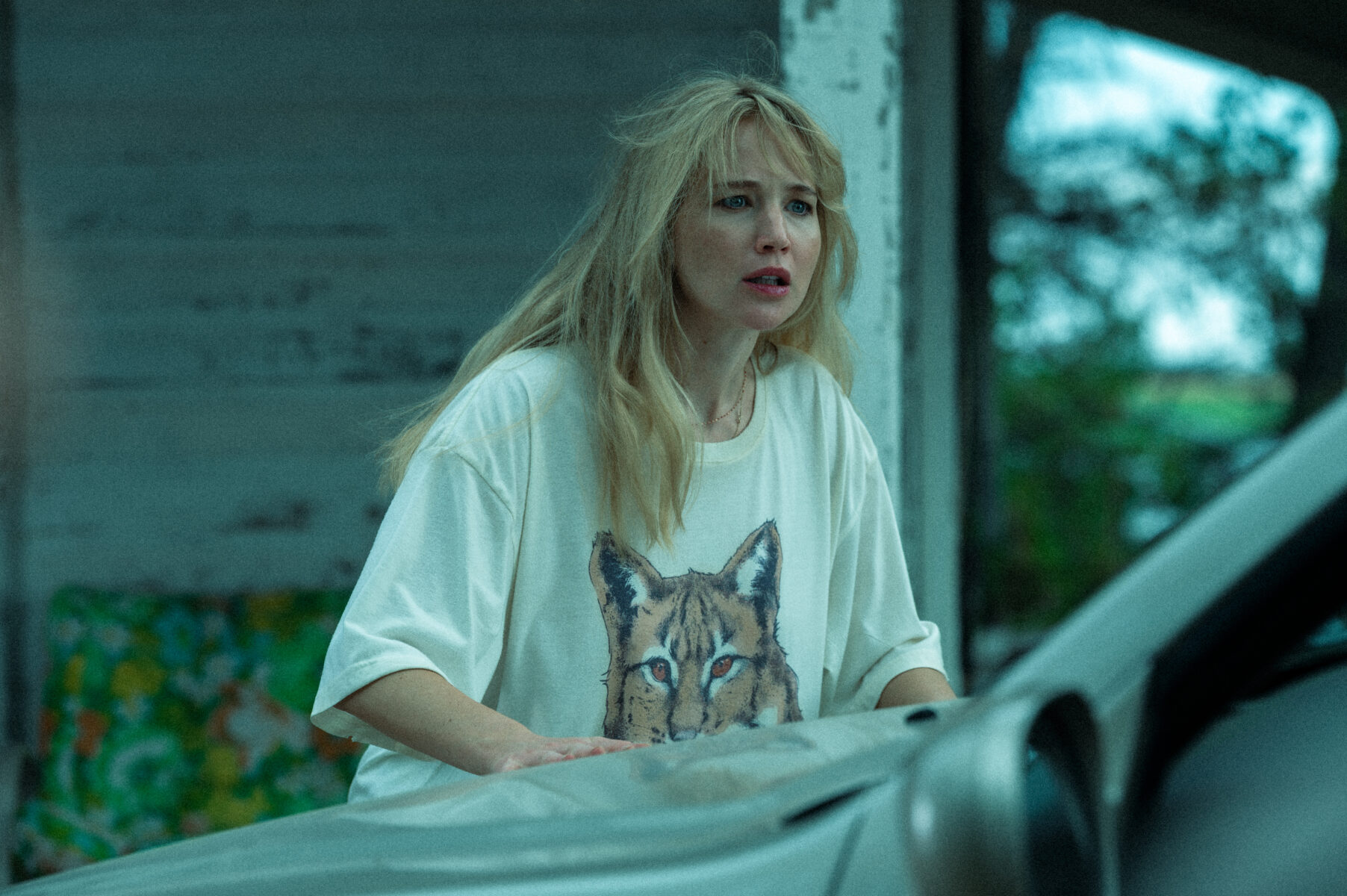
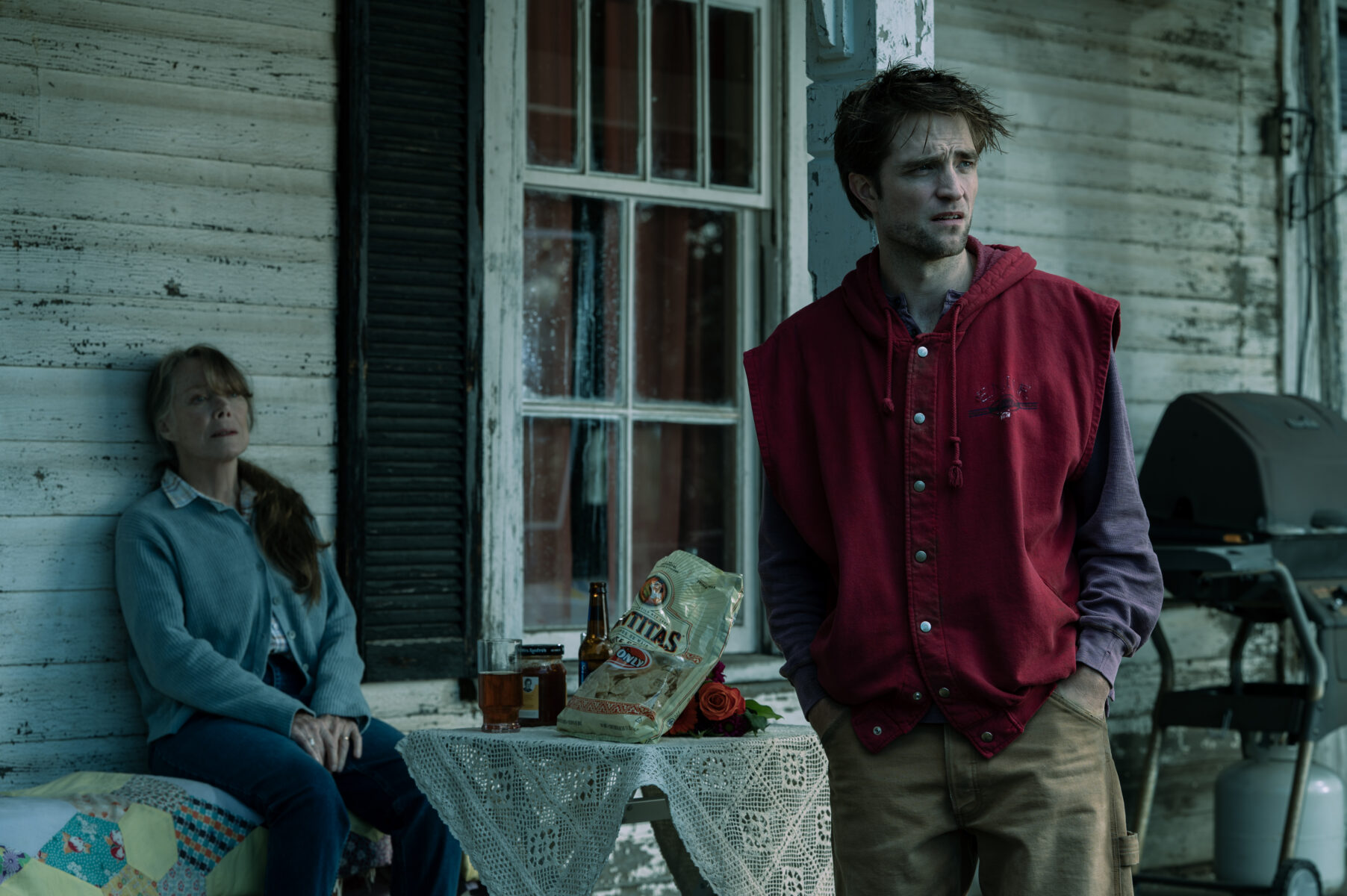
Ramsay has, throughout her career, worked with some of the finest actors around – from Oscar-winning Phoenix to Tilda Swinton and Samantha Morton. But Die My Love boasts the most impressive cast of all, with – alongside the likes of LaKeith Standfield, Sissy Spacek and Nick Nolte – two of the biggest Hollywood actors of the last 20 years starring. Former paradigm of heartthrobbery Robert Pattinson is an actor reborn in the second stage of his career, delivering legacy-defining showcases in the likes of Good Time, The Lighthouse, and The Batman. But Jennifer Lawrence is the real star here.
It is very much The Hunger Games, Silver Linings Playbook and Mother! alumnus’ film. Lawrence delivers arguably a career best performance as Grace, a troubled mother who deals with postpartum depression and other unspecified mental health problems. It’s a role that feels designed for her to play – so much so that it was her production company who initially approached Ramsay to direct.
Die My Love is a film of sparse dialogue, long, undecipherable tension, unanswered questions, and physical, animalistic performance. It’s gripping, grifting, uncomfortable, beautiful and affecting, heart wrenching, feral and immensely entertaining. It’s another sprawling and sensational effort from the quiet cinematic titan from Glasgow.
Below, Ramsay delves into the making of her new film, reflects on the time and effort it took to make it, and reveals all on working with Jennifer Lawrence and Robert Pattison.
Watch the trailer…
Read the interview…
I absolutely love the film. It lingers with you for days, for weeks. I often find myself sitting on the tube thinking about it.
Can you come and work for me?
Anytime. How has the response been for you?
You never really know. I’m always thinking about how to make it better; how to change bits of music, or whatever. So it’s not like you ever really finish films. You just abandoned them. There are scenes that are really good that we didn’t include as well and it felt like there’s too many endings maybe. It was one of those films that was quite endless. I think it’s got loads of scenes, especially for the amount of time we had shooting it. I think it’s like the second highest number of scenes that I’ve ever been shot in.
Really?
Yeah, some crazy amount. I’ll need to talk to the editor’s assistant about that, or the editor, but he was saying it was almost a world record with the amount of scenes we shot in the amount of time we had. It’s one of those films that I would’ve liked to explore a bit more, but it was super fun, it was just a crazy journey. And we shot in reversal film stock and I hadn’t shot that since Morvern Callar so that was really interesting. So yeah, it was a bit of a ride.
Yeah, it sounds like it. Do you think that is maybe the hardest part of your job in some ways? You know, having finality and saying, ‘Okay, that’s it, we have to stop doing this.’
It can be. I mean, I have done really very quick edits [with my previous films], and then with You Were Never Really Here, it’s super short and it’s hyper economic. With Die My Love, I had an okay time, but it wasn’t finished, but had a little bit more time afterwards. I would say as a director, you always want to explore a bit more, especially when you’ve got a lot of amazing material and lots of interesting stuff that works, but you’ve not quite found the right spot or you need to explore it a bit more. It’s a bit like making a painting. I would’ve gone a bit longer in this because it was a longer film that I’ve ever made. I’ve always done short things really fast, not because I necessarily wanted to but because of the needs and musts and the budget and stuff like that. I made all my days, we got everything, I’ve never really gone over. But then we kind of ran out of money for the edit, but I’m like, ‘Keep money for the edit, that’s the most important thing.’ It doesn’t ever cost as much as you think when you go to shoot and there were some ideas that I had that I really would’ve loved to shoot later but we just ran out of resources. Maybe I’ll come back to it, like a new director’s cut. I probably will at some point, but there’s other films to probably make first.
And talk me through the musical direction?
I loved working with Johnny Greenwood. He was going to do some stuff later on, but I was thinking I won’t really use a score. But then later on, I was like, “Bloody hell, Johnny Greenwood is amazing.” He actually was into it, but he was in Italy and it was quite late in the day. But he’s an amazing collaborator. I also worked with a really interesting music supervisor called Raife Burchill and also the guitarist from Nick Cave and the Bad Seeds, George Vjestica.
This is your first film in about eight years – why such a long break in between Die My Love and You Were Never Really Here?
It was a real fucker that Covid kicked in because I actually had one coming right after that. But it was quite complicated, setting a boat in the Arctic. I would never write anything in a boat in the Arctic ever again. But it’s a brilliant piece and I hope I can still get it made. It’s based on a short story by Margaret Atwood. But you have to book a boat a year in advance, it’s such a wieldy thing. But I did a deck that was 500 images, it’s a whole film in images.
So I was going to do that, then various things happened. There were boats, producers who wanted me to shoot in the wrong locations and various things happened and I lost the plot in that bit because it kept going on and on. But I still really want to make that project. I’d actually like to make that next. And there’s another one I really love as well, it’s an original. But that was with Julianne Moore. And then there’s another project that I’ve always wanted to do with Joaquin Phoenix and Rooney Mara that we wrote based on an idea where we spitballed and came up with this really cool thing, but it’s such a beautiful piece. It’s so unusual. Another hard one to get made, but I don’t know, I’d love to direct that as well.
So COVID happened, and also I had the kids. But COVID, honestly, it was great for writing, but I was literally just about to make another film. [We Need To Talk About Kevin] was like seven years before [You Were Never Really Here], and I said to myself, ‘That’s never going to happen again. I won’t let that happen again.’ Then we had two years of getting locked down. Obviously, I wanted to make a film earlier, I love shooting. I don’t want this stasis between projects but sometimes it just happens, it’s just the nature of the industry. And it can be that you try to do something quite ambitious and you need to put all these little pieces of the puzzle together and you’ve got all the actors that are attached so that helps, so let’s see.
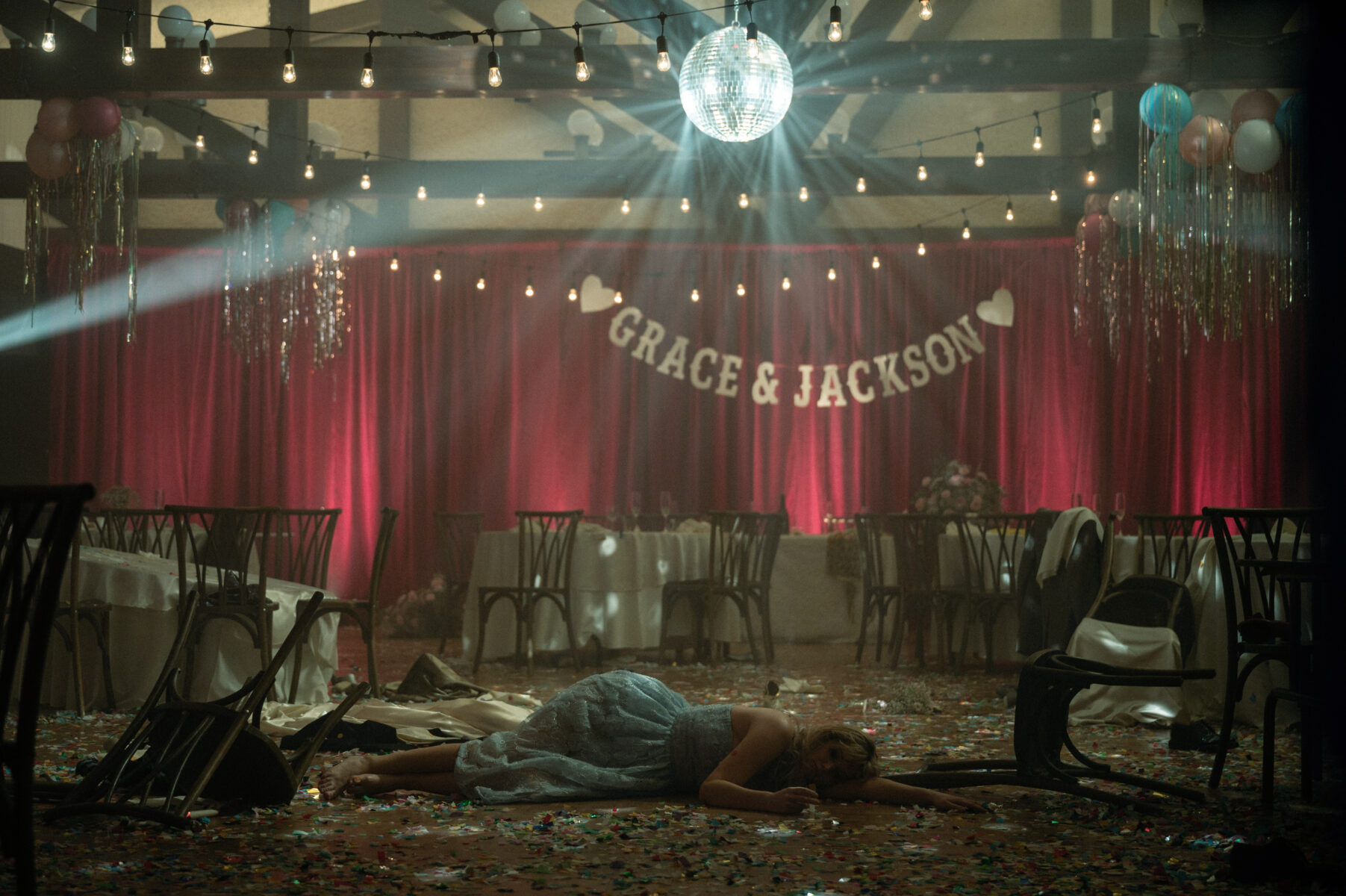
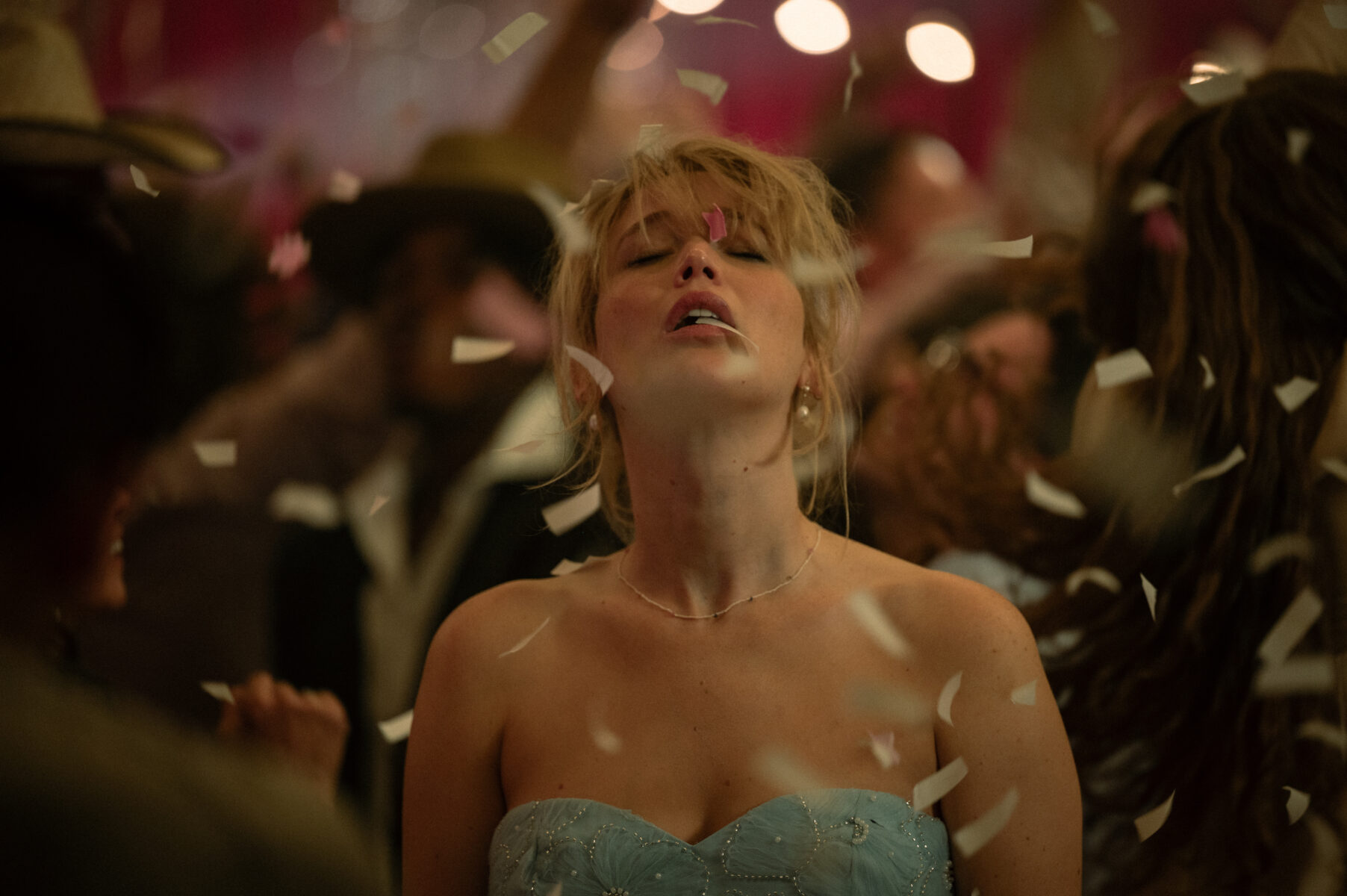
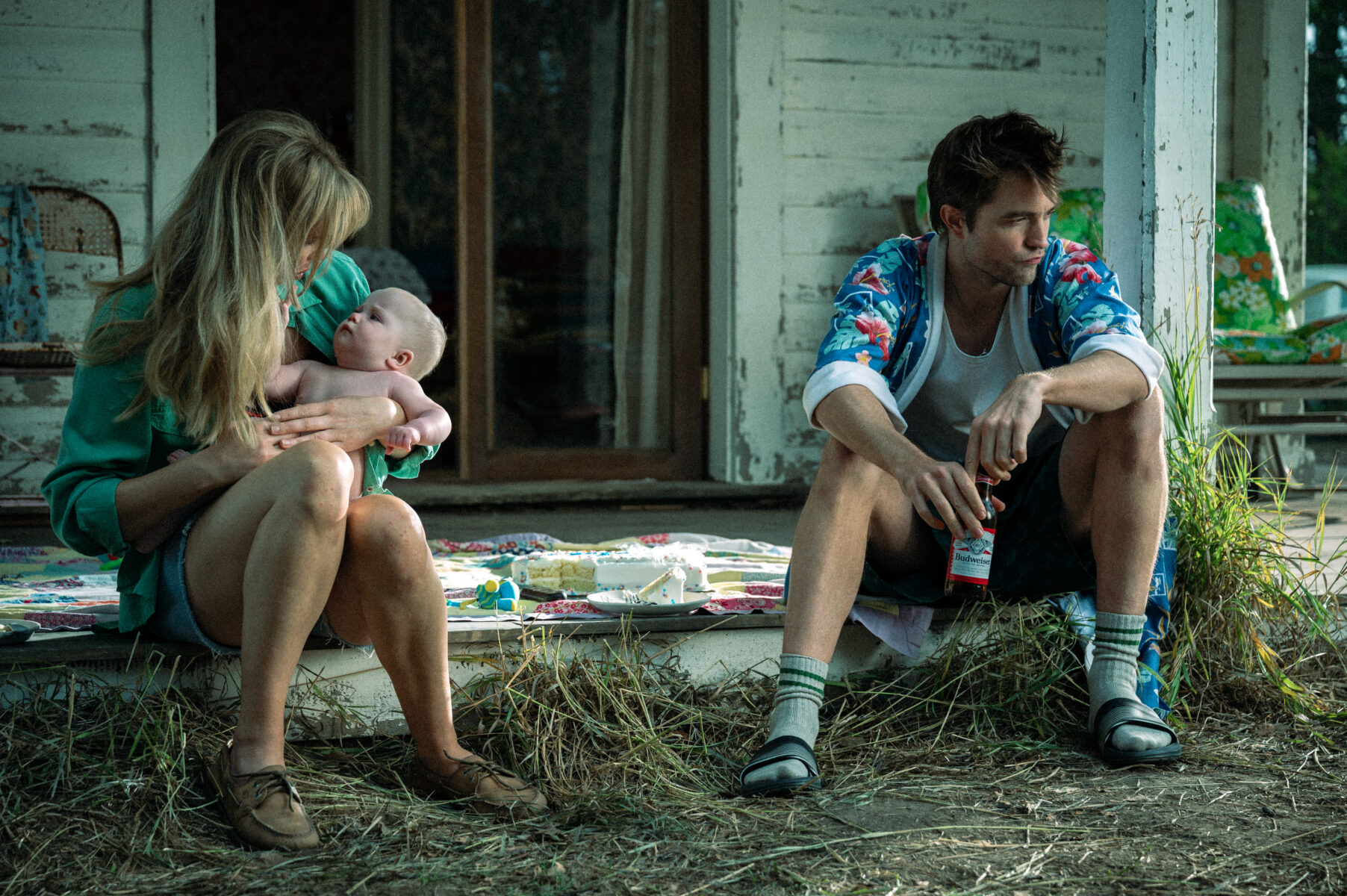
So with Die My Love, how did you first come across the novel and why did you decide to start writing the screenplay with Alice [Birch] and with Enda [Walsh]?
LR: I got an email saying Jennifer Lawrence wants to send you this book, and I was like, ‘Oh, okay.’ But I think I was really rude, never got back to her, just because I was involved with this other project, Stone Mattress. And then I read it, but I was like, ‘Oh my God, this is really quite surreal and it switches time and it jumps from characters. It’s really feral as well, it was great but I didn’t know how I would approach that and I didn’t know if it would be too much. Because there was a lot of stuff about postnatal depression which – I think it is about to some degree but it’s about a lot of other things as well.
So the way I came at it was a wee bit more like a love story between these two characters because I didn’t want to make the same kind of film as [We Need To Talk About Kevin]. But it never was about her anyway, she’s a different kind of character for Eva, but I suppose I was wrapping my head around it, about how I enter this space. It’s a beautifully written novel but it’s complicated and it’s not the easiest adaptation.
So I went back to Jennifer saying, ‘Do you want to do something else?’ I was explaining something else and they were like, ‘Do you want to do Die My Love?’ And I was like, ‘Oh,’ and I started thinking about it again and I got my head into it. And then Enda [Walsh] read it and he really loved it as well, he was really into it and then we sort of spitballed a lot of ideas. I was still trying to do Stone Mattress at the same time and then he did a draft and then I did a draft and we sort of took it from there. But we talked a lot about the ideas over a period of a couple of months. It was set originally in France; it’s an Argentinian novel. It was about a stranger in a foreign land so it had that aspect to it, and I liked that. But I thought I could see the possibility of them moving to any part. I always thought they lived in New York or somewhere. Then, a young couple moving somewhere so rural, so isolated. And like a lot of young couples these days, they probably didn’t have loads of money. They’ve inherited this house and then she finds herself very alone. So yeah, that was the process.
And then Alice, I met a while ago and she’s just brilliant. She’s the most humble person. There’s such a beauty in her, you know? So I just was like, ‘Look, I’ll only get five weeks prep,’ which I didn’t even find out until I got four and a half weeks prep and I was like, ‘Give me a break,’ you know? So then at that point I needed a bit of help just to keep up with everything because I was doing so many things. Normally I write myself, that’s the concept, or I’ve co-written before. In the end, I brought it back to how to express it visually which is what I do.
So, Jennifer was on board to begin with?
I think she really liked my work because she was really keen for me to do it. I don’t think I got back to her for six months or something, I was so embroiled in this other project, you know? I said ‘Yeah, whatever,’ it was really lovely that she sent it to me but then I realised how keen she was to work with me and that was a real honour.
One of the best in the business.
Yeah, totally. It was wild working with her.
How was working with her and with Robert [Pattinson]?
It was fantastic. I’ve worked with really great actors like Joaquin Phoenix, he’s amazing. Sam Morton, Tilda Smith, John C. Reilly, Ezra Miller. But [Lawrence] just has got that thing where she does things you wouldn’t expect, Joaquin’s like that too. I would encourage her, there was a lot of trust involved. I was just letting her run riot, I was kind of like, ‘Here’s a space to play in.’ She’s against this window that’s actually significant in the movie and she just licked the window, you know? I was like, ‘Wow.’ She’s really kind of animalistic in it, the character is.
What I liked about Arianna [Harwicz]’s novel as well is that it’s very unapologetic. It’s not like, ‘Poor thing,’ she’s actually a bit of a beast, you know? I love the way she played it like that. And one thing I really wanted to do, and I said right from the start in any discussions with any writers, was bring in some extra things into it that I don’t know if they were totally there throughout the whole book – to have these moments of humor, this black humour. It was important to me because I didn’t want to make it so dark and heavy so I think it’s unexpected. It’s a bit ‘goofball’, sometimes.
It’s one of those films that you can’t quite put your finger on what it actually is.
There was another end I wanted as well but there were so many things we were still working on. She just had pure instinct, and I love actors like that and I normally work with actors like that. [Robert Pattinson’s] the same, he’s great. In fact, I’d like to do him as the main character in another film because Die My Love is obviously more about her. But he’s just such a down to earth guy. He’s the kind of guy that you could just hang out with, he came and hung out with a crew. The cinematographer saw him in the lift one day in this crappy hotel that he was just staying with everybody else. It’s really endearing how beautifully normal he is and that’s really sweet.
I did some things where we didn’t even have time to shoot some scenes, so it was like, ‘Let’s just do it.’ The scene where they’re crawling in the grass with their asses. In that scene, there was this dialogue section and there was a barbecue and blah blah blah and the light was going down. There was no fucking way in earth we’re going to be able to shoot it. And I saw the DP, Sheamus McArvey, lying in this long grass. So I go and crawl up to him, I’m like, ‘We’re never going to make this in days, it’s so dark.’ And so we’re just looking at each other and we’re like, ‘Let’s just do the grass, let’s just do the whole scene, we’ll just shoot it like this.’ Anyway, I’m like, ‘Fuck, I better go and tell the actors, the lights are going.’ So I run right back and try to get back to see them. They were just in caravans nearby – we shot it in Calgary. And they looked at me like, ‘What the fuck are you talking about? We’re gonna crawl in the grass like cats.’ But they trusted me. They both went, ‘Yeah, all right. Okay, let’s just do it,’ so we just did it. And I love that scene.
I’m quite interested in where this film sits within your canon. What stage of your career do you feel that you’re at?
I think they’re all quite different. I never want to make the same kind of thing twice. The other two films I’ve been talking about, Polaris and Stone Mattress, they’re quite different. I guess it’s about this feral madness, beauty, this beast that a woman that didn’t even excuse herself. There was something in her that I just thought, ‘Wow, this is quite punk, man.’ You don’t see this many times. There was something that I liked about it that was like a fairy tale, a dark fairy tale of sorts.
lynne ramsay, lynne ramsay, lynne ramsay lynne ramsay lynne ramsay lynne ramsay lynne ramsay lynne ramsay lynne ramsay lynne ramsay lynne ramsay
Words – Ben Tibbits
Photography – Kimberly French & Seamus McGarvey
in HTML format, including tags, to make it appealing and easy to read for Japanese-speaking readers aged 20 to 40 interested in fashion. Organize the content with appropriate headings and subheadings (h1, h2, h3, h4, h5, h6), translating all text, including headings, into Japanese. Retain any existing
tags from
Augmenting her peerless canon with a volatile and sensual fifth full-length feature, Scottish auteur Lynne Ramsay talks directing Hollywood’s finest, the precision behind her career choices, and adapting Ariana Harwicz’s novel.

It’s been eight years since Lynne Ramsay released her last film, You Were Never Really Here, a dark and daring depiction of Joaquin Phoenix’s ex-soldier and the seedy underworld he moonlights as a vigilante. “It was a real fucker that Covid kicked in,” the Scottish director explains, her hearty laugh reverberating through the computer screen. She reveals she had another film ready to enter production before the world shut down. Set in the Arctic, based on a short story by Margaret Atwood, the film is still a central ambition of hers to make. But once the dust cleared from lockdown, her fixation lay elsewhere – thanks to one Jennifer Lawrence, her producer and leading lady in Die My Love.
55-year-old Ramsay – gorgeously erratic in conversation, tuning in during the madness of London Film Festival – has, including her new opus that we’re about to discuss, only released five feature length films across a 25-plus year career in filmmaking. That’s 1999’s Ratcatcher, widely renowned as one of the best ever British debut films, followed by 2002’s coming-of-age drama Morvern Callar, then the devilishly entertaining tragedy We Need to Talk About Kevin some nine years later, before the aforementioned You Were Never Really Here, in 2017.
Despite the infrequency of her films, Ramsay is considered among the best of her generation – a multi-award winning auteur with a unique cinematic eye, and an indelible interest in exploring the crevices of the human psyche. All-in-all, she’s a mightily impressive woman.
Now – Die My Love. Even for a creator known for her divisive, idiosyncratic filmmaking, Ramsay’s latest dips into difficult and provocative material. It’s a film adapted from the 2012 novel by Argentine writer Ariana Harwicz, co-written with Hunger writer Enda Walsh and Normal People writer Alice Birch, the story is re-interpreted in rural Montana. It follows a young couple with a newborn baby, as they fall into a nightmarish cycle of isolation and a deterioration of their relationship.


Ramsay has, throughout her career, worked with some of the finest actors around – from Oscar-winning Phoenix to Tilda Swinton and Samantha Morton. But Die My Love boasts the most impressive cast of all, with – alongside the likes of LaKeith Standfield, Sissy Spacek and Nick Nolte – two of the biggest Hollywood actors of the last 20 years starring. Former paradigm of heartthrobbery Robert Pattinson is an actor reborn in the second stage of his career, delivering legacy-defining showcases in the likes of Good Time, The Lighthouse, and The Batman. But Jennifer Lawrence is the real star here.
It is very much The Hunger Games, Silver Linings Playbook and Mother! alumnus’ film. Lawrence delivers arguably a career best performance as Grace, a troubled mother who deals with postpartum depression and other unspecified mental health problems. It’s a role that feels designed for her to play – so much so that it was her production company who initially approached Ramsay to direct.
Die My Love is a film of sparse dialogue, long, undecipherable tension, unanswered questions, and physical, animalistic performance. It’s gripping, grifting, uncomfortable, beautiful and affecting, heart wrenching, feral and immensely entertaining. It’s another sprawling and sensational effort from the quiet cinematic titan from Glasgow.
Below, Ramsay delves into the making of her new film, reflects on the time and effort it took to make it, and reveals all on working with Jennifer Lawrence and Robert Pattison.
Watch the trailer…
Read the interview…
I absolutely love the film. It lingers with you for days, for weeks. I often find myself sitting on the tube thinking about it.
Can you come and work for me?
Anytime. How has the response been for you?
You never really know. I’m always thinking about how to make it better; how to change bits of music, or whatever. So it’s not like you ever really finish films. You just abandoned them. There are scenes that are really good that we didn’t include as well and it felt like there’s too many endings maybe. It was one of those films that was quite endless. I think it’s got loads of scenes, especially for the amount of time we had shooting it. I think it’s like the second highest number of scenes that I’ve ever been shot in.
Really?
Yeah, some crazy amount. I’ll need to talk to the editor’s assistant about that, or the editor, but he was saying it was almost a world record with the amount of scenes we shot in the amount of time we had. It’s one of those films that I would’ve liked to explore a bit more, but it was super fun, it was just a crazy journey. And we shot in reversal film stock and I hadn’t shot that since Morvern Callar so that was really interesting. So yeah, it was a bit of a ride.
Yeah, it sounds like it. Do you think that is maybe the hardest part of your job in some ways? You know, having finality and saying, ‘Okay, that’s it, we have to stop doing this.’
It can be. I mean, I have done really very quick edits [with my previous films], and then with You Were Never Really Here, it’s super short and it’s hyper economic. With Die My Love, I had an okay time, but it wasn’t finished, but had a little bit more time afterwards. I would say as a director, you always want to explore a bit more, especially when you’ve got a lot of amazing material and lots of interesting stuff that works, but you’ve not quite found the right spot or you need to explore it a bit more. It’s a bit like making a painting. I would’ve gone a bit longer in this because it was a longer film that I’ve ever made. I’ve always done short things really fast, not because I necessarily wanted to but because of the needs and musts and the budget and stuff like that. I made all my days, we got everything, I’ve never really gone over. But then we kind of ran out of money for the edit, but I’m like, ‘Keep money for the edit, that’s the most important thing.’ It doesn’t ever cost as much as you think when you go to shoot and there were some ideas that I had that I really would’ve loved to shoot later but we just ran out of resources. Maybe I’ll come back to it, like a new director’s cut. I probably will at some point, but there’s other films to probably make first.
And talk me through the musical direction?
I loved working with Johnny Greenwood. He was going to do some stuff later on, but I was thinking I won’t really use a score. But then later on, I was like, “Bloody hell, Johnny Greenwood is amazing.” He actually was into it, but he was in Italy and it was quite late in the day. But he’s an amazing collaborator. I also worked with a really interesting music supervisor called Raife Burchill and also the guitarist from Nick Cave and the Bad Seeds, George Vjestica.
This is your first film in about eight years – why such a long break in between Die My Love and You Were Never Really Here?
It was a real fucker that Covid kicked in because I actually had one coming right after that. But it was quite complicated, setting a boat in the Arctic. I would never write anything in a boat in the Arctic ever again. But it’s a brilliant piece and I hope I can still get it made. It’s based on a short story by Margaret Atwood. But you have to book a boat a year in advance, it’s such a wieldy thing. But I did a deck that was 500 images, it’s a whole film in images.
So I was going to do that, then various things happened. There were boats, producers who wanted me to shoot in the wrong locations and various things happened and I lost the plot in that bit because it kept going on and on. But I still really want to make that project. I’d actually like to make that next. And there’s another one I really love as well, it’s an original. But that was with Julianne Moore. And then there’s another project that I’ve always wanted to do with Joaquin Phoenix and Rooney Mara that we wrote based on an idea where we spitballed and came up with this really cool thing, but it’s such a beautiful piece. It’s so unusual. Another hard one to get made, but I don’t know, I’d love to direct that as well.
So COVID happened, and also I had the kids. But COVID, honestly, it was great for writing, but I was literally just about to make another film. [We Need To Talk About Kevin] was like seven years before [You Were Never Really Here], and I said to myself, ‘That’s never going to happen again. I won’t let that happen again.’ Then we had two years of getting locked down. Obviously, I wanted to make a film earlier, I love shooting. I don’t want this stasis between projects but sometimes it just happens, it’s just the nature of the industry. And it can be that you try to do something quite ambitious and you need to put all these little pieces of the puzzle together and you’ve got all the actors that are attached so that helps, so let’s see.



So with Die My Love, how did you first come across the novel and why did you decide to start writing the screenplay with Alice [Birch] and with Enda [Walsh]?
LR: I got an email saying Jennifer Lawrence wants to send you this book, and I was like, ‘Oh, okay.’ But I think I was really rude, never got back to her, just because I was involved with this other project, Stone Mattress. And then I read it, but I was like, ‘Oh my God, this is really quite surreal and it switches time and it jumps from characters. It’s really feral as well, it was great but I didn’t know how I would approach that and I didn’t know if it would be too much. Because there was a lot of stuff about postnatal depression which – I think it is about to some degree but it’s about a lot of other things as well.
So the way I came at it was a wee bit more like a love story between these two characters because I didn’t want to make the same kind of film as [We Need To Talk About Kevin]. But it never was about her anyway, she’s a different kind of character for Eva, but I suppose I was wrapping my head around it, about how I enter this space. It’s a beautifully written novel but it’s complicated and it’s not the easiest adaptation.
So I went back to Jennifer saying, ‘Do you want to do something else?’ I was explaining something else and they were like, ‘Do you want to do Die My Love?’ And I was like, ‘Oh,’ and I started thinking about it again and I got my head into it. And then Enda [Walsh] read it and he really loved it as well, he was really into it and then we sort of spitballed a lot of ideas. I was still trying to do Stone Mattress at the same time and then he did a draft and then I did a draft and we sort of took it from there. But we talked a lot about the ideas over a period of a couple of months. It was set originally in France; it’s an Argentinian novel. It was about a stranger in a foreign land so it had that aspect to it, and I liked that. But I thought I could see the possibility of them moving to any part. I always thought they lived in New York or somewhere. Then, a young couple moving somewhere so rural, so isolated. And like a lot of young couples these days, they probably didn’t have loads of money. They’ve inherited this house and then she finds herself very alone. So yeah, that was the process.
And then Alice, I met a while ago and she’s just brilliant. She’s the most humble person. There’s such a beauty in her, you know? So I just was like, ‘Look, I’ll only get five weeks prep,’ which I didn’t even find out until I got four and a half weeks prep and I was like, ‘Give me a break,’ you know? So then at that point I needed a bit of help just to keep up with everything because I was doing so many things. Normally I write myself, that’s the concept, or I’ve co-written before. In the end, I brought it back to how to express it visually which is what I do.
So, Jennifer was on board to begin with?
I think she really liked my work because she was really keen for me to do it. I don’t think I got back to her for six months or something, I was so embroiled in this other project, you know? I said ‘Yeah, whatever,’ it was really lovely that she sent it to me but then I realised how keen she was to work with me and that was a real honour.
One of the best in the business.
Yeah, totally. It was wild working with her.
How was working with her and with Robert [Pattinson]?
It was fantastic. I’ve worked with really great actors like Joaquin Phoenix, he’s amazing. Sam Morton, Tilda Smith, John C. Reilly, Ezra Miller. But [Lawrence] just has got that thing where she does things you wouldn’t expect, Joaquin’s like that too. I would encourage her, there was a lot of trust involved. I was just letting her run riot, I was kind of like, ‘Here’s a space to play in.’ She’s against this window that’s actually significant in the movie and she just licked the window, you know? I was like, ‘Wow.’ She’s really kind of animalistic in it, the character is.
What I liked about Arianna [Harwicz]’s novel as well is that it’s very unapologetic. It’s not like, ‘Poor thing,’ she’s actually a bit of a beast, you know? I love the way she played it like that. And one thing I really wanted to do, and I said right from the start in any discussions with any writers, was bring in some extra things into it that I don’t know if they were totally there throughout the whole book – to have these moments of humor, this black humour. It was important to me because I didn’t want to make it so dark and heavy so I think it’s unexpected. It’s a bit ‘goofball’, sometimes.
It’s one of those films that you can’t quite put your finger on what it actually is.
There was another end I wanted as well but there were so many things we were still working on. She just had pure instinct, and I love actors like that and I normally work with actors like that. [Robert Pattinson’s] the same, he’s great. In fact, I’d like to do him as the main character in another film because Die My Love is obviously more about her. But he’s just such a down to earth guy. He’s the kind of guy that you could just hang out with, he came and hung out with a crew. The cinematographer saw him in the lift one day in this crappy hotel that he was just staying with everybody else. It’s really endearing how beautifully normal he is and that’s really sweet.
I did some things where we didn’t even have time to shoot some scenes, so it was like, ‘Let’s just do it.’ The scene where they’re crawling in the grass with their asses. In that scene, there was this dialogue section and there was a barbecue and blah blah blah and the light was going down. There was no fucking way in earth we’re going to be able to shoot it. And I saw the DP, Sheamus McArvey, lying in this long grass. So I go and crawl up to him, I’m like, ‘We’re never going to make this in days, it’s so dark.’ And so we’re just looking at each other and we’re like, ‘Let’s just do the grass, let’s just do the whole scene, we’ll just shoot it like this.’ Anyway, I’m like, ‘Fuck, I better go and tell the actors, the lights are going.’ So I run right back and try to get back to see them. They were just in caravans nearby – we shot it in Calgary. And they looked at me like, ‘What the fuck are you talking about? We’re gonna crawl in the grass like cats.’ But they trusted me. They both went, ‘Yeah, all right. Okay, let’s just do it,’ so we just did it. And I love that scene.
I’m quite interested in where this film sits within your canon. What stage of your career do you feel that you’re at?
I think they’re all quite different. I never want to make the same kind of thing twice. The other two films I’ve been talking about, Polaris and Stone Mattress, they’re quite different. I guess it’s about this feral madness, beauty, this beast that a woman that didn’t even excuse herself. There was something in her that I just thought, ‘Wow, this is quite punk, man.’ You don’t see this many times. There was something that I liked about it that was like a fairy tale, a dark fairy tale of sorts.
lynne ramsay, lynne ramsay, lynne ramsay lynne ramsay lynne ramsay lynne ramsay lynne ramsay lynne ramsay lynne ramsay lynne ramsay lynne ramsay
Words – Ben Tibbits
Photography – Kimberly French & Seamus McGarvey
and integrate them seamlessly into the new content without adding new tags. Ensure the new content is fashion-related, written entirely in Japanese, and approximately 1500 words. Conclude with a “結論” section and a well-formatted “よくある質問” section. Avoid including an introduction or a note explaining the process.

